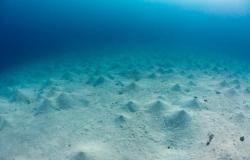The EU Environment Council approved, last June 17, the nature restoration law (Nature Restoration Law) through qualified majority voting with twenty out of 27 countries in favor. Italy, with Hungary, Poland, the Netherlands, Finland and Sweden voted against the approval.
The new rules provide for the obligation to restore natural conditions in at least 20 per cent of the land and sea surface of the Union territories by 2030 (and 30 percent of territories selected to gradually achieve protection for all selected ecosystems by 2050).
The plan is divided into three phases:
- By 2030countries will have to restore the good health of at least 30% of the natural habitats in danger, which are mainly woods, plains, rivers, lakes, coasts and seabeds;
- By 2040the percentage of ecosystem restoration is raised to 60%;
- By 2050the percentage must reach 90%.
According to the new rules, the Member States will have to regularly submit national recovery plans to the Commission showing how they intend to achieve the objectives. They will also need to monitor and report on their progress. Instead of submitting comprehensive plans up to 2050, two years after the entry into force of the regulation, Member States will first submit national recovery plans covering the period up to June 2032, with a strategic overview for the period after June 2032. By June 2032 Member States will present recovery plans up to 2042 with a strategic overview up to 2050 and by June 2042 they will present plans up to 2050. Furthermore, the Council added the possibility for Member States to take specific specific national varieties in terms of social, economic and cultural requirements, regional and local characteristics and population density, including the specific situation of the outermost regions.
“We need a common sense national plan in defining the implementation measures, because it is unthinkable to restore at least 20% of the EU land and sea areas by 2030 and all the degraded ecosystems by 2050, without taking into account what farmers are facing to preserve biodiversity and landscape from climate change and erosion, as well as the commitment to guarantee healthy, quality food for all, despite the phase of profound geopolitical and economic instability”. – explains the national president of Cia-Italian Farmers, Cristiano Fini.
The choice of habitats and areas to be restored up to 2030 as a priority have already been selected through Natura 2000the world’s largest network of protected areas which covers 18% of European territory, 6% of seas, more than a thousand animal and plant species and five hundred types of wild birds.
The measures provide that in agricultural ecosystems there must be (for a share of at least 10%) uncultivated fields, ponds, streams, rows of trees but also stone walls suitable for hosting many animals and insects but also fundamental in preventing landslides. .
Furthermore, the Nature Restoration Act would require countries to restore at least 25 thousand kilometers of rivers, transforming them into free-flowing rivers by eliminating dams and artificial barriers, but also to ensure that there is no loss of either the total national surface area of urban green spaces, or of urban tree cover, in addition to the commitment to plant 3 billion new trees.
On the table, now provided for by EU law, specific requirements and indicators regarding the storage of organic carbon in the mineral soils of cultivated lands, the definition of the share of agricultural land with highly diverse landscape characteristics. “These and other issues – he adds Cristiano Fini – will have to be addressed by listening to farmers, an important effort to limit the economic and administrative repercussions, at least until 2033, when the Commission will examine the impacts of this regulation”.
In the meantime, the EU Environment Council gives the green light to the general orientation of the Directive on soil monitoring and resilience which had already accepted several of the requests formulated by CIA and which now awaits passage in the Trilogues, with the new EU Parliament, to be further improved, especially in relation to more stringent rules on consumption. A glimmer of light on the World Day to Fight Desertification.
“It’s like this,” he concludes Finish– which enhances the strategic role of agriculture for the well-being of ecosystems and constant protection of the environment. Soil is a fundamental resource for farmers and inland areas, the basis of agricultural production and a source of income for rural communities”.





